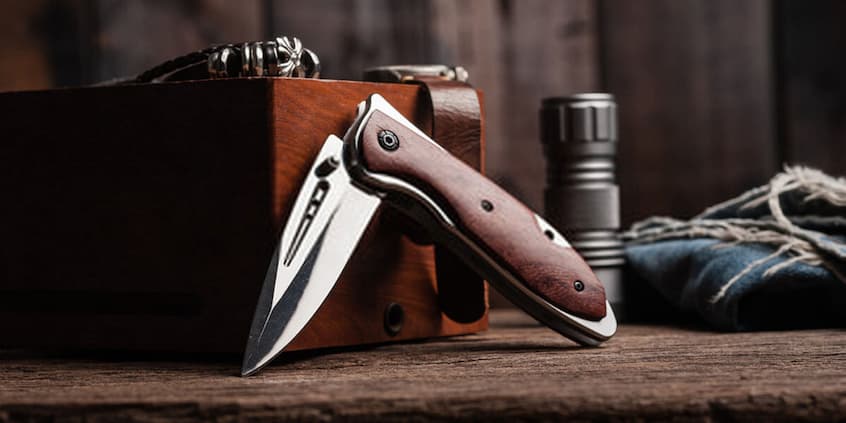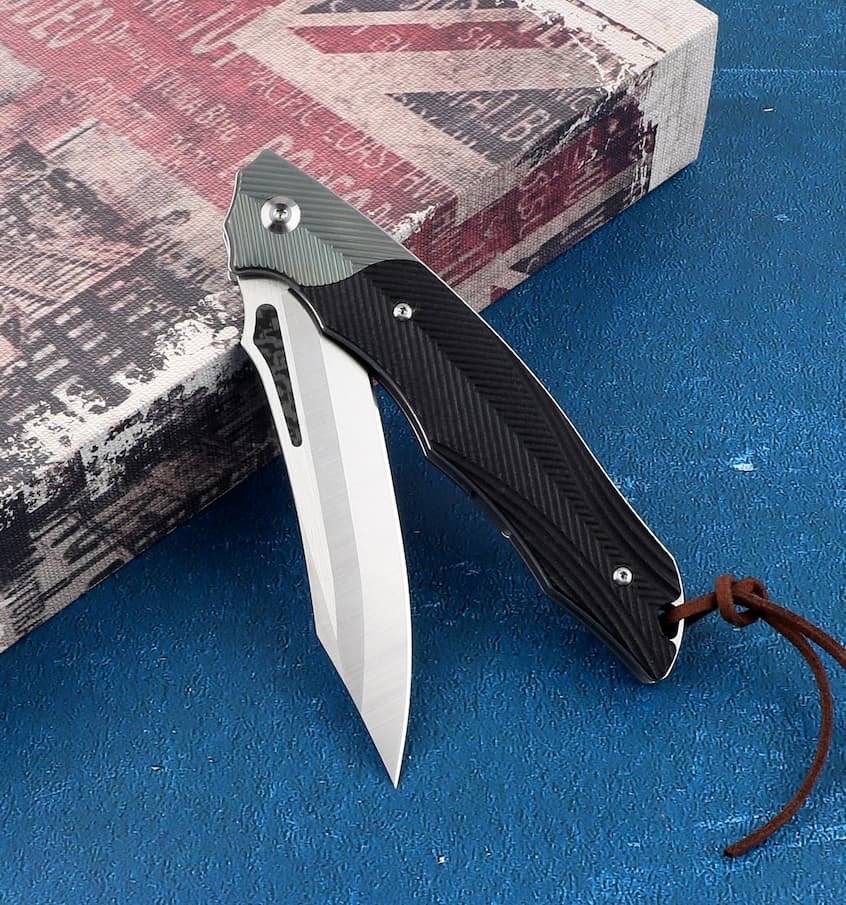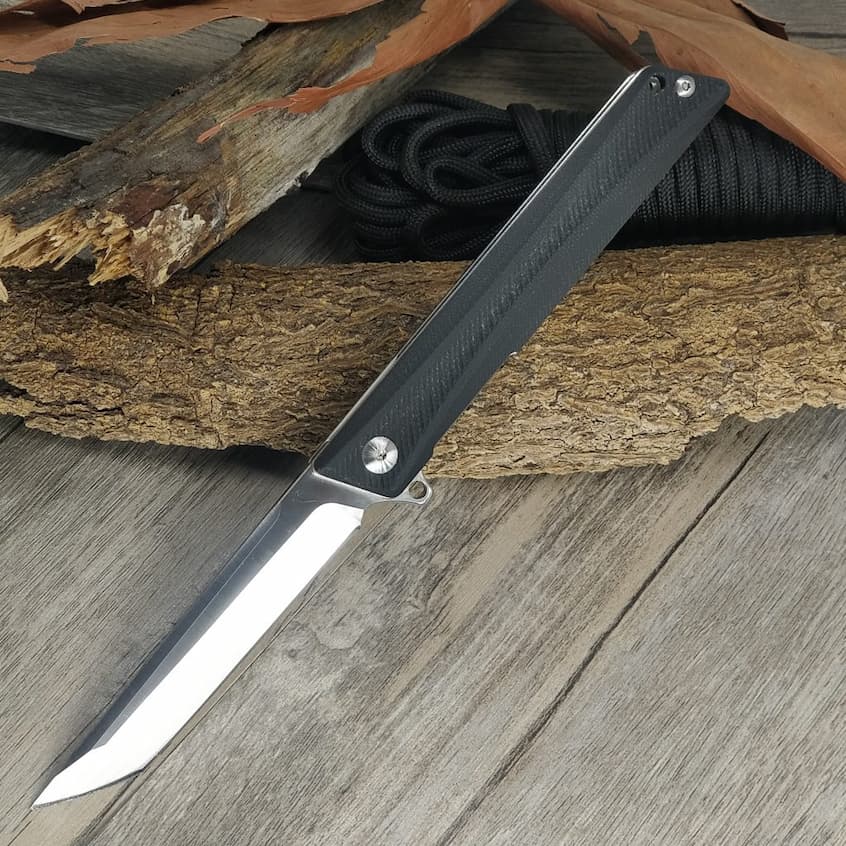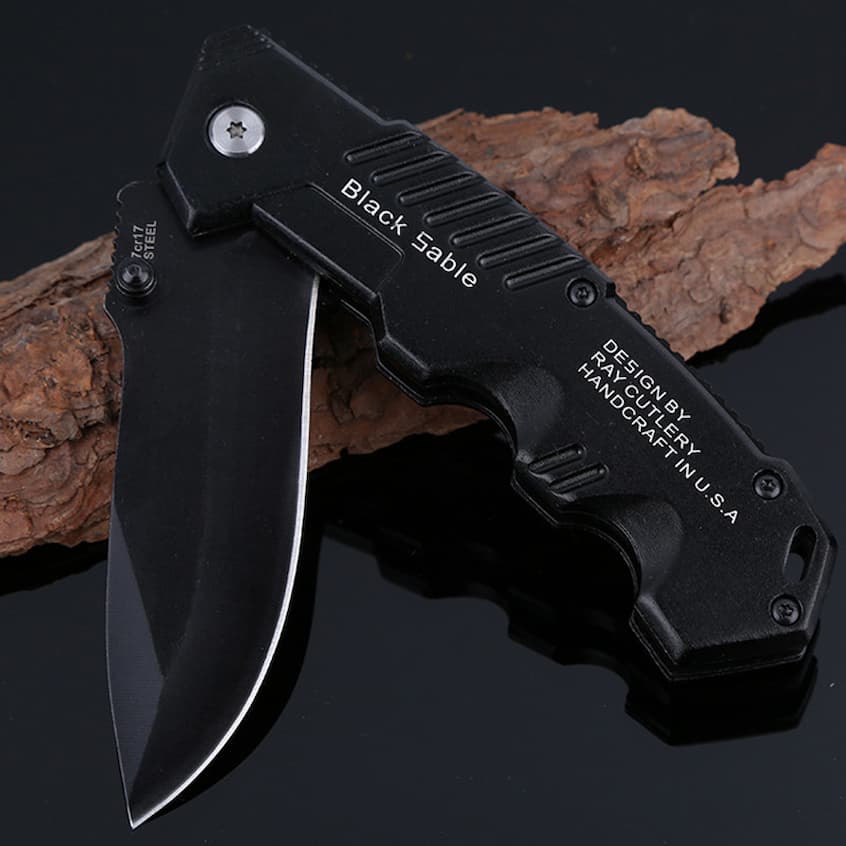
The Lowdown on Folding Blade Knives
Knives have been around in some form or other for hundreds of thousands of years. During that time, the basic combination of blade and handle evolved into dozens of different designs, shapes, sizes, and materials to be effectively used in as many applications. Choosing a knife will largely depend on how and where it’s used. If you need all-around versatility and a knife that’s efficient in all manners of cutting, then nothing beats a pocket or folding knife.
Folding knives are a modern twist on the traditional fixed blade design. They’re more compact, lighter, easier and safer to carry, and decent versions are just as durable and reliable as their bigger, fixed-blade siblings in dozens of every day or specialist tasks. There’s no need (and extra cost) for sheaths, nor the risk of cutting yourself or others by accident. And blades sitting snugly within the handle will remain sharper for longer, meaning maintenance is less of an issue.

Contents
Choosing Your Next Folding Knife
With so many variables at play, choosing your next folding blade knife depends on several crucial factors that determine whether (and how) it gets the job done. The number of blades, blade sizes, and edge profiles, the choice of materials both in the blade(s) and handle, and often overlooked aspects like the types of mechanisms used to lock and unlock the blade are some crucial things to go by. The more you know, the easier it will be to get the right knife for your needs.
Number of Blades
Folding and pocket knives come in three basic types depending on the number of blades they have. Single-bladed knives are by far the most common, and for most uses the most robust. They have a larger blade and a folding mechanism that promises outright strength. These knives do a good job in more demanding tasks, rivalling bigger knives with fixed blades. The only downside is the limited versatility.
In this respect, multibladed folding knives do a better job. They can have up to four different-sized blades, often each with a different point design making them especially useful for a range of tasks. If this is not enough, then you’re left with multitools, which besides (a smaller) blade, include extras like screwdrivers, saws, corkscrews, can openers, tweezers, scissors, pliers, and just about any tool you’ll ever need. An early version was the Swiss Army knife, but today you’ll find more specialised, bigger, and better-built multitools from other established brands.
The Differences in Folding Knife Blade Edges
Blade edges are also varied and perform in different ways. Plain-edged blades have a single, long sharp edge that provides good control and accuracy for different types of push cuts. They’re easy to sharpen and need little maintenance. Serrated edges are better when performing pull cuts, or sawing, due to the saw-like teeth. These make easy work of tougher materials and are the blade edge you’d want in specialised tasks like cutting through rope or wood. Combination blade edges provide the best of both and are becoming increasingly popular due to the variation in different cut types. They have some of the disadvantages of fully serrated versions by needing more attention to keep the blade sharp but are considered an all-purpose edge type.
Blade Sizes and Types

Sizes determine among other things the strength the blade has, but also the overall weight. You’ll want a balance of both. Blades in folding blade knives range anywhere from 6 to 25cm (or 2.75 to 10 inches). A medium blade of around 10cm can handle most tasks without being overly heavy, or too big when folded, especially if you have the knife concealed. Also, consider blade thickness. This is generally between 2 to 4mm. Thinner blades in better materials are preferred in precision cuts.
Point and blade types impact the types of cut the blade is most suited to, so this determines how the knife will be used. Popular point types include drop points, good for outright control and strength, especially in piercing; straight-back blades with curved edges, ideal for chopping and slicing; tanto or chisel points for deep push cuts; clip points with a concave cut out making them good for both piercing and slicing; trailing points with a pronounced curved back and ideal for skinning and slicing; Wharncliffe blades used for cutting and carving wood and dozens of other varieties.
Blade Materials
Most knives have steel blades, but you’ll also find ceramic, aluminium, and titanium blades. There are hundreds of steel varieties, from stainless or carbon steel to tool, high-speed, and alloy steels and their many subtypes. The chemical makeup determines things like edge retention, blade strength and hardness, wear and corrosion resistance, and where and how the folding blade knife can be used.
Stainless steel blades have numerous advantages, with decent toughness and low wear, and are capable in wet and corrosive conditions. Carbon steel blades have a lower carbon content than stainless steel, but this makes them sharper but also brittle. They are easier to sharpen but may not be ideal for cutting through harder materials. Most good knife brands have their proprietary take on the steel they use.
Handles, Locking, and Opening Mechanisms
Traditional knives had bone or wood handles and there are modern takes on these materials in newer folding knives. Titanium and aluminium handles are durable, lightweight, and corrosion-resistant so good for harsher environments, whereas stainless steel adds a bit more weight but doesn’t forsake durability. Synthetics like G-10, Micarta and Zytel are hard-wearing, lightweight, impact and heat-resistant, won’t rust, and are most often textured for optimal grip. The materials you choose will often be a personal preference as each has its own distinct look and hand feel. Go for grip and comfort.
Folding knives won’t be what they are unless they have opening and locking mechs. Simpler and cheaper knives require you to mechanically lift or lower the blade in position. Switchblades open automatically by pressing a button or ‘switch’ and knives with assisted opening have blades that spring open when pressing hard on a thumb stud or lever. Locking mechs lock the blade once open. Here too there are different types, including frame and liner locks, and those fitted at different points in the handle. A good lock will keep the blade open regardless of what you’re working on.
So, Which Folding Knife Do I Get?

Look for folding knives in specialist knife stores. These stock a wide selection of popular as well as high-end brands and have knives at different price points. Choose a knife that is the right size and weight, comfortable and easy to use, and will perform effortlessly for your intended task.

